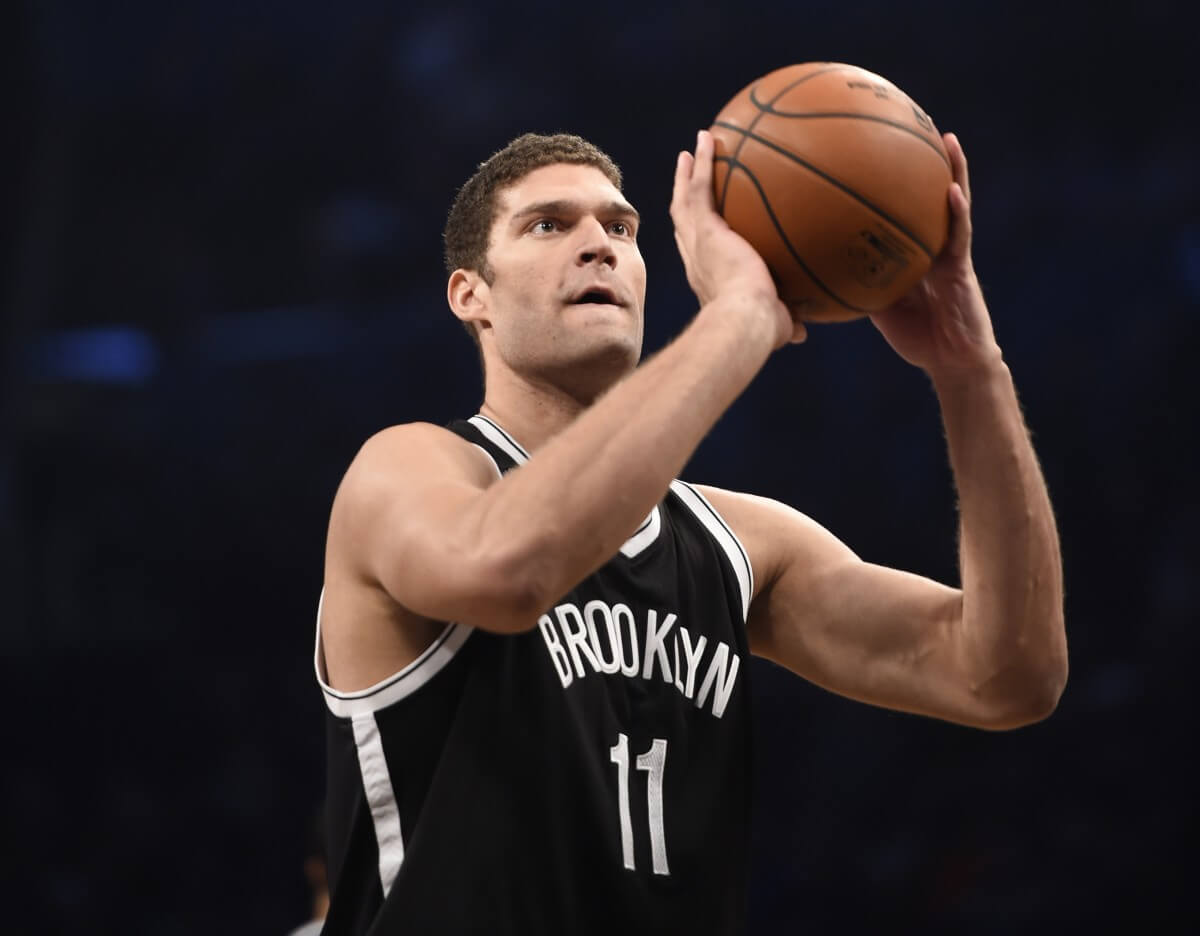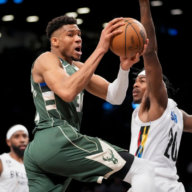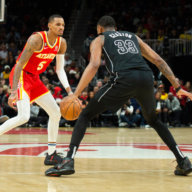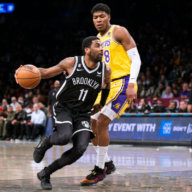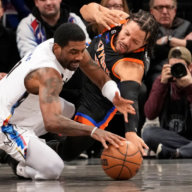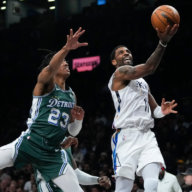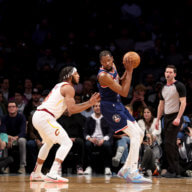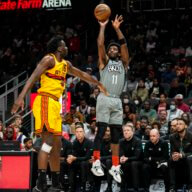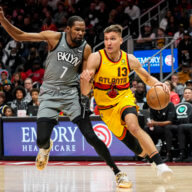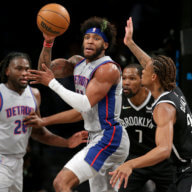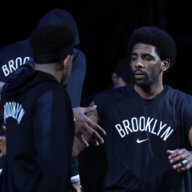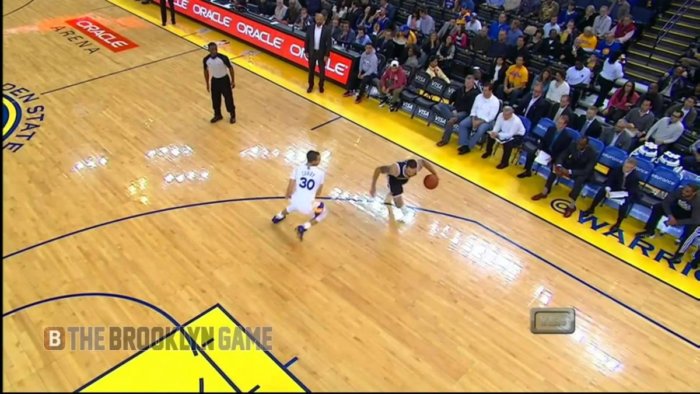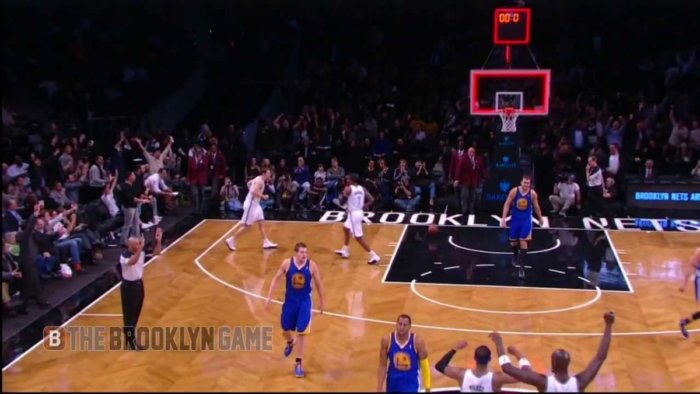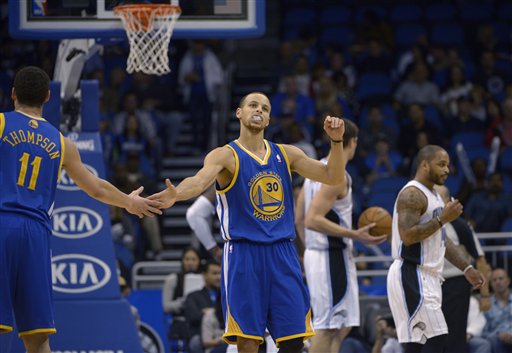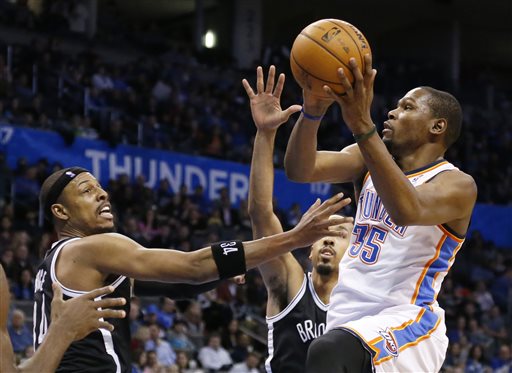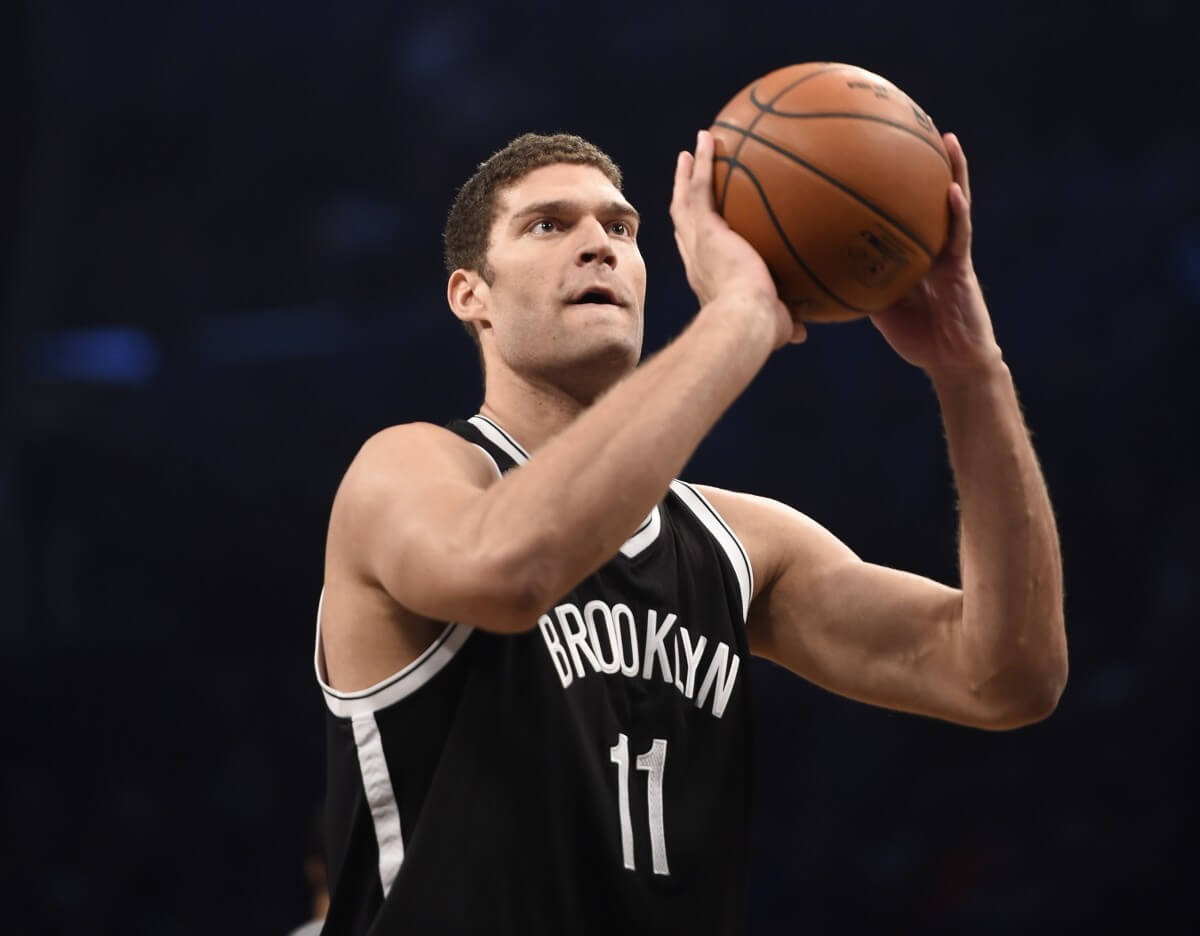
It’s almost a running joke at this point. Brook Lopez hangs out after a practice or before a game, burying three-pointers with nothing but a flick of the wrist. Someone asks Lionel Hollins — or whoever the Brooklyn Nets coach was at that point — if Lopez is going to start shooting threes. Sighs and shrugs ensue.
But last season was slightly — emphasis on slightly — different. Before last year, Lopez taken seven career regular season three-point attempts, all in blowouts or as end-of-shot-clock heaves. But from January 5th to March 11th last year, Lopez took 10 in the span of 30 games — hardly Stephen Curry numbers, but a significant enough switch to turn some heads.
What didn’t turn heads: he only made one of those ten shots. “He took enough last year,” Hollins said, without noting that he *made* enough.
Sure enough, we caught Lopez working on his three-point shot after the season. My unofficial count of one stretch had Lopez hitting 59 of 105 threes, tiring after the first ~60 attempts.
So is this the year that Lopez finally becomes a “stretch 5”? Well, he has to earn it.
“He’s been working on them, so it may be some times we might let him be out there (shooting),” Hollins said.
That’s not a rah-rah ringing endorsement, but it’s also not a flat “no,” which is a step forward for a coach who wanted to put Mason Plumlee in the post last summer. Pulling Lopez out to the three-point line adds another outside shooting weapon to a team that lacks them, but it also pulls him from the rim, where he did most of his damage last season. After the All-Star Break, Lopez posted robust averages of 19.7 points and 9.2 rebounds per game, with 12.2 of those points per game coming in the paint (not including free throws off shot attempts). He also ranked third in the league in second-chance points per game and fourth in offensive rebounds per game, two numbers that come from, well, staying inside.
But Lopez also played the majority of his minutes after the All-Star Break without another primary rebounder at his side, which necessitated him staying near the basket. Thaddeus Young isn’t a strong rebounder, and outside of the failed two-center experiment with Mason Plumlee, the Nets more often went small with Lopez at the 5 last season.
This year, they have a little more flexibility. For one, they signed Thomas Robinson to back up Lopez & Young; Robinson is a rebounding animal with little range outside of the paint. The Nets could conceivably start with Lopez & Young, ask Lopez to bang bodies for six minutes, then bring Robinson in off the bench to do the dirty work and let Lopez float outside to preserve his body and fling off pick-and-pops.
It makes sense at some point, at least by the numbers. Lopez has steadily improved his shooting from long twos (see below chart), hitting a career-best 45.5 percent on his 55 two-point shot attempts 20 feet or further from the basket this past season, per Basketball-Reference. That steady improvement could mean he’s getting more comfortable with the space away from the basket, and soon enough the extra point that comes from taking one step back should outweigh the added difficulty of the shot.
They could also experiment with Willie Reed next to Lopez; Reed hasn’t played an NBA game yet but is a similar inside presence and was a double-double machine in the D-League. But Hollins may be averse to another two-center lineup after the disaster that Lopez & Plumlee put up last year, particularly on the defensive end — Reed and Lopez are both rim-protectors, and any team with a decent outside shooter at power forward could pick them apart.
Hollins has a reputation as a defensive-minded coach, and he might want Lopez to put in the work on that end to earn shots on offense. He did say he wants Lopez to be a leader, more through action than words.
“It’s not just going out there with that ‘Rah, rah! You do this and I’ll do that,'” Hollins said. “It’s ‘go do your job.’ If you go do your job, then you can turn around and hold somebody else accountable to do their job on the same level of intensity and consistency that you are. And then after that you build a group of leaders.”
Nets GM Billy King agreed. “We want you to be more vocal,” King said Tuesday. “You don’t have to be rah-rah and jumping around waving towels. But I need you to push this group and help guide it where you want it to go.’ I said, ‘You’ve been here for a long time, but now, if you’re going to come back, you’ve got to put your stamp on it a little bit.’ And I think he’s accepted that.”

